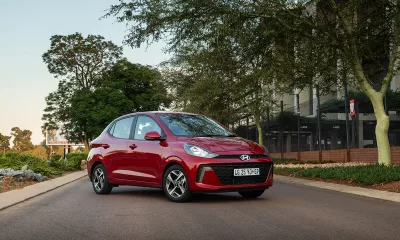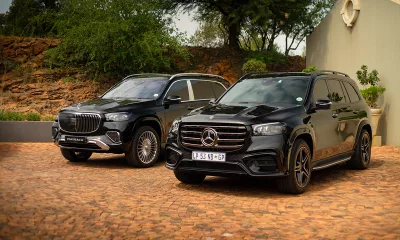In the early 1930s Volkswagen created a car that would bring affordable motoring to the masses. The Type 1, later to be known as the original Beetle, was one of the most influential cars in the history of motoring and proved a success for the German company. Production of this car only ceased in Brazil in 2003 and VW followed it up with the Golf 4-based New Beetle in 1997. Only 2 600 units were sold in South Africa. It was a bit of a flop to say the least. For the latest iteration of the Beetle, VW went back to the original model for its inspiration. CAR recently attended the local launch to see what this new model has to offer.
Styling – inside and out
The new-generation Beetle sports a similar long nose front and short back silhouette seen on the original car, but now adopts a flatter roofline, a more steeply angled rear window and, of course, the famous round headlamps synonymous with this car. It’s a touch more masculine than its predecessor and manages to catch more of the original car’s aesthetic essence.
Once inside you’ll find more details that remind of the original. These include the oversized centrally mounted speedo and panel-mounted glove box. This particular model comes with body-coloured panels on the facia and doors. The 1,4 Sport model gets the piano black on these panels. While the black finish looks clean, many are likely to warm more to the body-coloured version, which gives the car a more retro and fun feel.
Everything else is similar to what you can find in most modern Volkswagen products and quality feels on par with the likes of the Polo and Golf.
On the road
This model’s 1,2-litre engine is turbocharged to push out 77 kW at 5 000 r/min and 175 N.m of torque from 1 550 r/min. Mated with a six-speed manual transmission, this unit pulls strongly and the torque is available from low enough in the rev range to make the car feel punchy in traffic while offering reasonable overtaking urge. The output figures may not look like much, but the engine feels strong and gives the car a suitable long-legged feel on the open road. Another plus is that the 1,2-litre engine is quite refined, especially when compared to the slightly rough-idling 1,4-litre unit.
The steering is precise and we were able to get a good feel for the handling when we tackled a few mountain passes on the local launch. There’s not much body roll and you do get a feeling of being nannied by the standard ESP system, but overall there’s plenty of fun to be had with this car should you wish to push it a bit.
With MacPherson stuts and coil springs at the front, and a torsion beam, trailing arms and coil springs at the rear, the ride is satisfactory but can get choppy when encountering frequent road surface corrugations.
Space and practicality
Built in Brazil on a modified Golf 6 platform, the new Beetle is longer (+152 mm), wider (+84 mm) and lower (-12 mm) than the previous model. The boot can handle 310 dm3 of luggage with all seats in place and up to 905 dm3 with the rear seats folded flat (50:50 split). The luggage space is a lot bigger than I expected, but the boot is still quite shallow.
The new Beetle is a four seater, three-door car. I recently had a baby seat in the back of the model that we currently have in the CAR test fleet and it fitted in quite well. With baby and baby’s mother at the back it was surprisingly comfortable. Thanks to doors that open quite wide and front seats that fold and move forward far enough for a rear-seat passenger to be able to climb in and out with relative ease.
Overall
There’s a lot to like this new Beetle. It doesn’t feel (for lack of a better word) as girly as the previous model and it is more reminiscent of the original. We can’t honestly say that it offers a lot more than the Mini Cooper and Citroen DS3, but it definitely adds a viable alternative to the market of retro hatchbacks. It does, however, have the unenviable task of following a model that didn’t especially endear itself to consumers. Still, it’s a capable and charismatic product, so here’s hoping that people buy into it.
Specification
Model: Beetle 1,2 TSI Design
Price: R235 400
Power/torque: 77 kW/175 N.m
0-100 km/h: 10,9 (claimed)
Max speed: 180 km/h (claimed)
Fuel consumption: 5,9 litres/100 km (claimed)
CO2: 137 g/km
Luggage capacity: 310 – 905 dm3
Maintenance plan: 5 years/60 000 kms
Click here for a full specification sheet.











